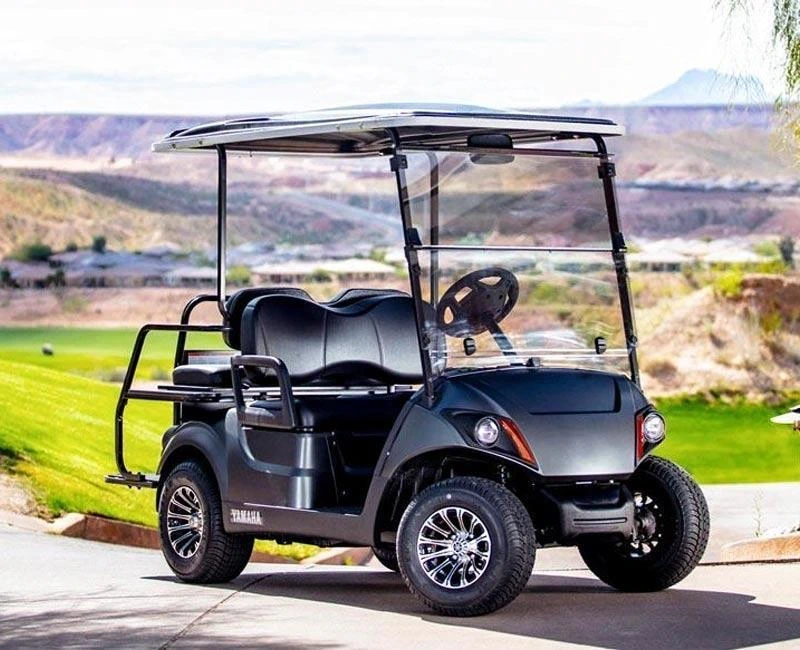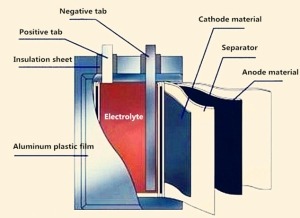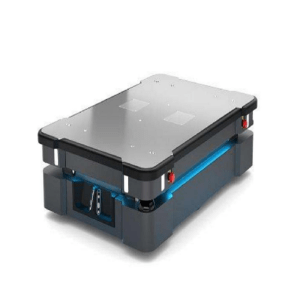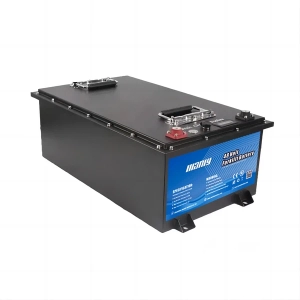Consejos de expertos sobre los tiempos de carga de la batería del carrito de golf
Tabla de contenido
- Consejos de expertos sobre los tiempos de carga de la batería del carrito de golf
- 1. Comprender los tipos de baterías y sus tiempos de carga
- 2. Tipos de cargadores y su papel en los tiempos de carga
- 3. Sobrecarga y subcarga: los efectos en la batería
- 4. Optimización del mantenimiento de la batería para una carga eficiente
- 5. La influencia de factores externos en la carga de la batería
- 6. Solución de problemas de carga lenta
- 7. Responder preguntas frecuentes sobre los tiempos de carga de la batería del carrito de golf
- 8. De cara al futuro: el futuro de las baterías y la carga de los carritos de golf
- 9. Consejos y trucos de expertos para reducir los tiempos de carga de los carritos de golf
- 10. Conclusión: conclusiones clave sobre los tiempos de carga de la batería del carrito de golf
- Más información sobre la batería
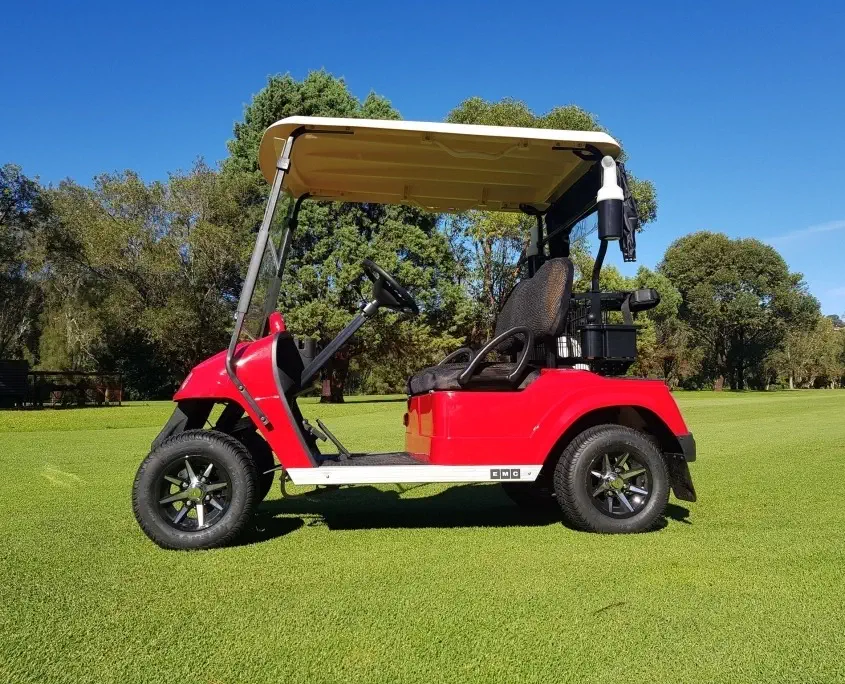
1. Comprender los tipos de baterías y sus tiempos de carga
In the world of golf carts, the type of battery you use can make a significant difference in performance, longevity, and charging time. Whether you're using lead-acid batteries, the traditional choice for most golf cart owners, or you've opted for the more modern lithium batteries, it's crucial to understand how different batteries affect charging times.Baterías de plomo-ácido tradicionales frente a baterías de litio modernas
Lead-acid batteries are the most commonly used type in golf carts. They are often affordable and relatively easy to maintain. These batteries typically require between 8-12 hours to charge fully from a completely depleted state. However, newer technologies like lithium golf cart batteries offer a more efficient alternative. The mejor batería de litiopara un carrito de golf puede proporcionar un rendimiento similar en una forma más liviana y compacta y con tiempos de carga más rápidos.La creciente popularidad de las baterías de litio
Lithium batteries are becoming increasingly popular in the golf cart industry due to their many advantages. First, they are lighter than lead-acid batteries, which can help reduce the overall weight of the golf cart for better performance and efficiency. Secondly, they have a higher energy density, meaning they can store more energy in a smaller space. Finally, they can charge much faster than traditional lead-acid batteries, usually in 2-3 hours, a fraction of the time lead-acid batteries take.Elegir la mejor batería de litio para carrito de golf
When it comes to selecting the best lithium golf cart battery, there are a few considerations to keep in mind. One of these is the voltage. The Las mejores baterías para carritos de golf de 48v. can offer excellent performance and long life, making them a great choice for most golf carts. They provide the power necessary for your golf cart to function optimally and ensure a smooth and comfortable ride on the course.Another consideration is the quality of the battery. The best lithium golf cart batteries are designed to last for years, making them a cost-effective choice in the long run. They also require less maintenance than lead-acid batteries, saving you time and effort.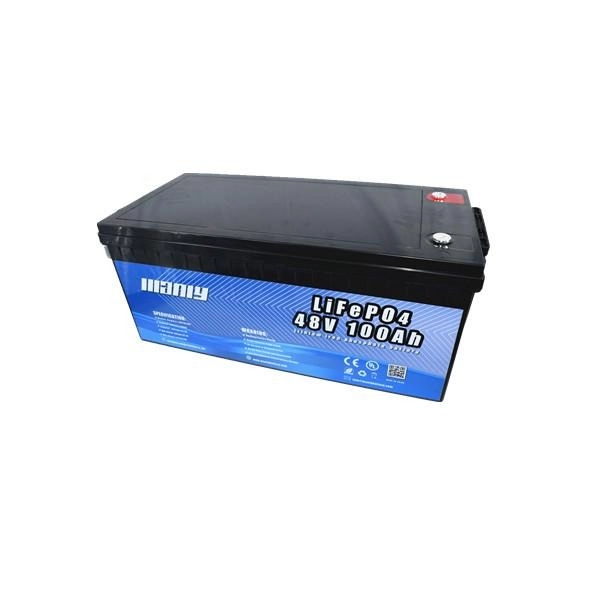
Tres factores clave hacen que las baterías de litio sean superiores a las de plomo-ácido
Vida útil y rendimiento mejorados
Let's consider the example of a high-traffic golf course, where golf carts are in use all day. A traditional lead-acid battery golf cart might need a battery replacement every 4-5 years, while a golf cart equipped with a lithium battery can typically run for around 10 years before needing a replacement. This difference in lifespan makes a significant impact on maintenance costs over time. Furthermore, lithium batteries don't experience a decrease in performance as they discharge. This means that a golf cart using a lithium battery will operate at peak performance throughout the entire round of golf, unlike lead-acid battery golf carts that might slow down as the battery depletes.Carga rápida y eficiencia
Consider another scenario, a golf resort where golf carts are frequently used for short periods and then returned for charging. A traditional lead-acid battery could take up to 8-12 hours to fully recharge, which might not be practical in such a busy setting. In contrast, a lithium battery can be fully recharged in just 2-3 hours, meaning the golf cart can be back in action much quicker. Moreover, lithium batteries can handle partial charging without affecting their lifespan, which means they can be topped up during a lunch break or downtime without any adverse effects.Ahorro de peso y eficiencia energética
Lastly, let's take the example of a golf course with challenging terrain, where lighter golf carts have an advantage. A lithium battery typically weighs around 1/3 of an equivalent lead-acid battery, resulting in a much lighter golf cart. This weight reduction translates into improved energy efficiency and better handling, making it easier to navigate uphill paths and uneven surfaces. Additionally, the lower weight also means less wear and tear on the golf cart's components, contributing to lower maintenance costs over time.These examples highlight the significant advantages of lithium batteries, especially in terms of lifespan, charging efficiency, and weight reduction. They also underline why many golf cart owners and operators are opting for lithium batteries for their golf carts.2. Tipos de cargadores y su papel en los tiempos de carga
Just as different batteries require different charging times, the type of charger you use can also affect the time required. Standard chargers take longer but are usually more affordable, whereas fast chargers can significantly reduce charging time. However, it's important to use a charger that's compatible with your battery to avoid potential damage. For example, an oversized charger can cause excessive gassing and heat, leading to battery damage or even explosions.Algunos tipos comunes de cargadores y su función en los tiempos de carga de las baterías de carritos de golf:
| Tipo de cargador | Descripción | Tiempo de carga típico | Más adecuado para |
|---|---|---|---|
| Cargador lento | Un cargador de baja corriente diseñado para mantener una batería completamente cargada durante largos períodos de inactividad. | Puede tardar entre 12 y 24 horas en cargar completamente una batería agotada. | Lo mejor para mantener la carga de la batería durante el invierno o períodos de inactividad. |
| Cargador estándar | Un tipo común de cargador que se proporciona con la mayoría de los carritos de golf. Equilibra entre carga rápida y salud de la batería. | Normalmente, entre 8 y 10 horas con una batería completamente agotada. | Adecuado para las necesidades de carga diarias. |
| Cargador rápido | Proporciona una alta corriente para una carga rápida. Sin embargo, puede que no sea ideal para la duración de la batería si se usa con frecuencia. | Puede cargar una batería completamente agotada en 2-4 horas. | Lo mejor para escenarios donde se necesita una carga rápida, como en un campo de golf concurrido. |
| Cargador inteligente | Un cargador avanzado que puede adaptar su proceso de carga en función del estado y necesidades de la batería. | El tiempo de carga varía. Estos cargadores tienen más que ver con la salud y la longevidad de la batería que con la velocidad. | Ideal para mantener un estado óptimo de la batería y extender su vida útil. |
3. Sobrecarga y subcarga: los efectos en la batería
Managing the charge levels of your golf cart battery is crucial to its longevity. Overcharging can lead to overheating, capacity loss, and shortened battery life. On the other hand, allowing the battery to discharge more than 80% or letting it sit in a low charge state for extended periods can also decrease its lifespan and capacity. A good practice is to charge your batteries fully after each use, even if you've only used the cart for a short time.4. Optimización del mantenimiento de la batería para una carga eficiente
Regular maintenance is key to prolonging your golf cart battery's life and ensuring efficient charging. This includes keeping the batteries clean, as dust and grime can cause problems. Regularly watering your batteries and ensuring that the water levels are adequate is also crucial, as too little water can affect the battery's performance. Finally, regularly inspecting your battery and keeping connectors tight can prevent unexpected issues and help maintain efficient charging times.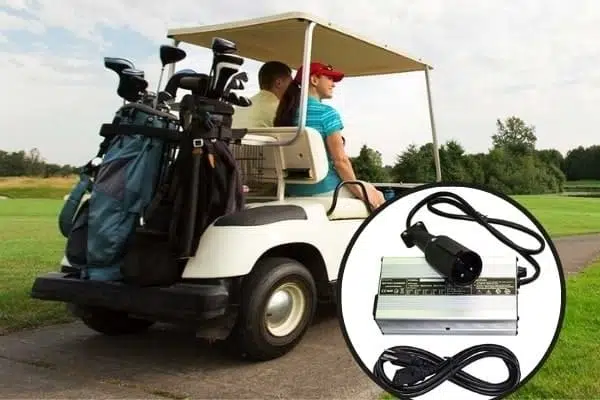
5. La influencia de factores externos en la carga de la batería
External factors like temperature can have a significant effect on your golf cart’s charging time. Charging batteries in hot conditions can reduce the efficiency of the charging process. For every 18° F (10° C) rise above room temperature (77° F or 25° C), battery life decreases by 50%. Hence, it's advisable to charge your golf cart in cool conditions and keep the batteries in a cool, dry place.| External Factor | Descripción | Influence on Charging Time |
|---|---|---|
| Ambient Temperature | The temperature of the environment where the battery is being charged. | Extreme temperatures, both hot and cold, can increase charging times. Batteries charge most efficiently at room temperature. |
| Battery Age and Condition | The overall health and age of the battery. | Older batteries or those in poor condition may take longer to charge or may not hold a full charge. |
| State of Discharge | How depleted the battery is at the start of charging. | A battery that is fully discharged will take longer to charge than one that is only partially discharged. |
| Charger Condition | The condition and efficiency of the charger being used. | A malfunctioning or inefficient charger can result in longer charging times. |
| Usage Patterns | How and when the golf cart is used. | Frequent, heavy use can deplete a battery faster, leading to longer charging times. |
6. Solución de problemas de carga lenta
Slow charging can be a result of various issues. These could range from damaged or loose cables, incorrect charger voltage, or even the presence of dirt and grime on the battery terminals. Regular inspection of the battery, including cables and connectors, can help identify and resolve these issues. A problematic charger can also be a reason for slow charging, and it might need replacement.7. Responder preguntas frecuentes sobre los tiempos de carga de la batería del carrito de golf
There are always going to be questions when it comes to charging golf cart batteries. After all, the process is not as simple as plugging in your phone before you go to sleep. There are various factors to consider and details to understand to make the most out of your battery's lifespan and performance. In this section, we'll address some of the most common questions we receive from golf cart owners about battery charging times.Pregunta 1: ¿Con qué frecuencia debo cargar las baterías de mi carrito de golf?A common misconception is that you should only charge your batteries when they're nearly dead. In reality, it's best to recharge your batteries after every use, regardless of how far you've traveled. This approach helps extend the life of the battery and ensure your golf cart is always ready for use.Pregunta 2: ¿Puedo sobrecargar las baterías de mi carrito de golf?Sí, la sobrecarga es un riesgo real que puede acortar la vida útil de tus baterías. Sin embargo, los cargadores de baterías de carritos de golf modernos suelen estar equipados con funciones de apagado automático que evitan la sobrecarga. Lo hacen detectando cuando las baterías están completamente cargadas y luego interrumpiendo el suministro de energía.Pregunta 3: ¿Por qué la batería de mi carrito de golf tarda tanto en cargarse?Puede haber varias razones para esto. Uno de los más comunes es que la batería ha envejecido y ya no puede mantener la carga con tanta eficacia como antes. También podría deberse a factores externos como la temperatura o el tipo de cargador que se utiliza. Consulte las secciones anteriores de esta publicación de blog para obtener una comprensión integral de estos factores.Pregunta 4: ¿Los diferentes tipos de baterías de carritos de golf tienen diferentes tiempos de carga?Absolutely. As we've discussed earlier in the post, lithium-ion batteries typically charge faster than lead-acid batteries, for instance. The specific charging time can vary depending on the battery's brand, age, and condition, among other factors.8. De cara al futuro: el futuro de las baterías y la carga de los carritos de golf
As we step into the future, the landscape of golf cart batteries and their charging protocols is poised for significant transformation. Technological advancements, environmental concerns, and a shift towards energy efficiency are paving the way for innovative solutions that can enhance the efficiency, lifespan, and overall performance of golf cart batteries. In this section, we'll explore some of the anticipated trends and how they may impact your golfing experience.El auge de las baterías de iones de litio
The increasing prevalence of lithium-ion batteries is one trend we can't ignore. Offering advantages like a longer lifespan, quicker charging times, and lower maintenance needs, lithium-ion batteries are rapidly becoming the preferred choice for golf cart owners. The transition from traditional lead-acid batteries to lithium-ion counterparts aligns with the global shift towards cleaner, more sustainable energy solutions. As technology progresses, we can expect these batteries to become even more efficient and affordable.Soluciones de carga inteligentes
The future of golf cart battery charging is smart. Imagine a battery charger that not only knows when to stop charging to prevent overcharging but can also adapt its charging protocol based on the battery's age, temperature, and health. This smart technology is already being introduced into the market, with golf cart owners seeing the benefits in the form of extended battery life and enhanced performance.Carga con energía solar
With a growing emphasis on renewable energy, solar-powered charging for golf carts is an intriguing prospect. Solar panels can be installed onto the roofs of golf carts, harnessing the sun's energy throughout the day. This renewable energy source can either directly power the cart or charge the onboard battery. While currently, solar technology for golf carts is in its nascent stages, the potential for its widespread adoption is vast.Carga inalambricaThe concept of wireless charging has already revolutionized the smartphone industry, and it's expected to do the same for electric vehicles, including golf carts. Imagine driving your golf cart onto a charging pad and having your batteries charge automatically, with no need for plugs or cables. While the technology is still in its early development stages for golf carts, it offers promising possibilities for the future.Looking ahead, the future of golf cart batteries and their charging protocols seems promising, packed with innovations that could enhance user convenience, efficiency, and environmental sustainability. While the timing and widespread adoption of these advancements remain to be seen, it's clear that we are moving towards a more efficient, greener, and smarter era of golf cart usage.